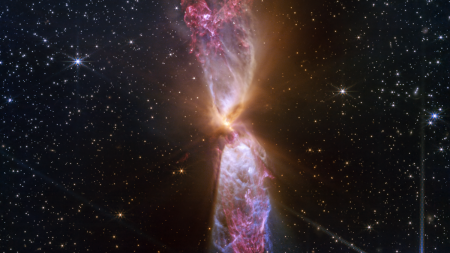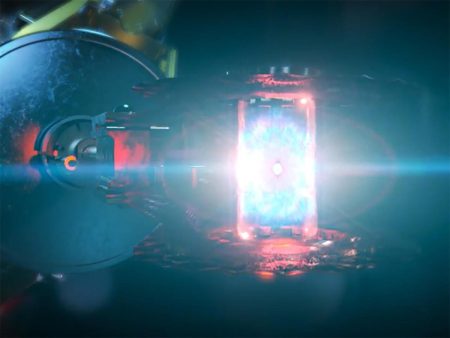A New Asteroid Sparks Interest and Concern: What We Know So Far
A New Asteroid on the Radar: Understanding the Latest Discovery
In recent weeks, the scientific community has been abuzz with the discovery of a new asteroid, named 2024 YR4, which has captured the attention of astronomers and the public alike. This space rock, estimated to be between 130 and 300 feet in diameter, has raised eyebrows as its potential threat level to Earth has slightly increased. While the likelihood of an impact remains low—currently at about 2%—scientists are working tirelessly to refine their understanding of its trajectory and composition. The asteroid’s discovery underscores the importance of asteroid tracking and the ongoing efforts to protect our planet from potential cosmic threats.
What Are Asteroids, and Why Do They Matter?
For those unfamiliar, asteroids are remnants from the formation of our solar system over 4.6 billion years ago. These rocky objects, significantly smaller than planets, primarily reside in the asteroid belt between Mars and Jupiter. Occasionally, gravitational forces push them out of this region, sending them on unpredictable journeys through space. While most asteroids pose no threat to Earth, some, like 2024 YR4, come close enough to warrant scientific scrutiny. Understanding asteroids not only helps us better comprehend the solar system’s history but also prepares us for any potential dangers they might pose.
How Scientists Track Potentially Hazardous Asteroids
The discovery of 2024 YR4 in December 2023 by a telescope in Chile marks the beginning of its journey under scientific surveillance. Astronomers use advanced telescopes and complex algorithms to monitor near-Earth objects (NEOs) like this asteroid, tracking their orbits and assessing the likelihood of a collision. Initially, the chance of 2024 YR4 impacting Earth was estimated at just over 1%, but updated calculations have raised it to about 2%. While this may seem alarming, it’s important to note that such probabilities often fluctuate as more data is collected. NASA’s Center for Near-Earth Object Studies (CNEOS) and other agencies emphasize that the odds of an impact will likely decrease as the asteroid’s path becomes clearer.
Expert Reassurance: No Need to Panic Just Yet
Despite the slight increase in impact probability, experts are keen to reassure the public that there is no immediate cause for concern. Paul Chodas, director of CNEOS, explains that the rising odds are a normal part of the scientific process as more precise data becomes available. “The impact probability will almost certainly continue to fluctuate,” he notes, adding that it’s likely to drop to zero as the asteroid’s trajectory is better understood. Larry Denneau, a senior software engineer at the University of Hawaii’s asteroid impact alert system, echoes this sentiment: “You don’t have to be worried about anything. It’s a curiosity. Let the process play out, and we’ll have a for-sure answer.”
What If the Worst Happens? Preparing for the Unexpected
While the chances of an impact are low, scientists are nonetheless considering the potential consequences should 2024 YR4 collide with Earth. The severity of such an event would depend largely on the asteroid’s size. If it’s on the smaller end of the estimated range (around 130 feet), the impact might resemble the Tunguska event of 1908, which flattened thousands of square miles of forest in Siberia. However, if the asteroid is closer to 300 feet in diameter, the effects could be significantly more catastrophic. Thankfully, advancements in asteroid detection and deflection technologies offer hope for mitigating such threats in the future.
NASA’s Planetary Defense: Learning from Past Successes
NASA has already demonstrated its capability to address asteroid threats through innovative missions like the Double Asteroid Redirection Test (DART). In 2022, the DART spacecraft successfully altered the orbit of a harmless asteroid, proving that humanity has the technological know-how to deflect dangerous space rocks. While 2024 YR4 is still years away from potentially posing a threat, the lessons learned from missions like DART will be invaluable if a deflection becomes necessary. Additionally, upcoming observations by the Webb Space Telescope in March 2024 will provide critical insights into the asteroid’s size and orbit, helping scientists refine their predictions and prepare for any eventuality.
Conclusion: Staying Vigilant Without Overreacting
The discovery of asteroid 2024 YR4 serves as a reminder of the awe-inspiring complexity and unpredictability of our universe. While the asteroid’s current threat level is low, it highlights the importance of continued investment in asteroid tracking and planetary defense systems. As scientists gather more data and refine their predictions, the likelihood of an impact will become clearer. Until then, the public can rest assured that the world’s top experts are on the case, working to ensure our safety while unraveling the mysteries of the cosmos. For now, curiosity and caution are the appropriate responses—not panic.









